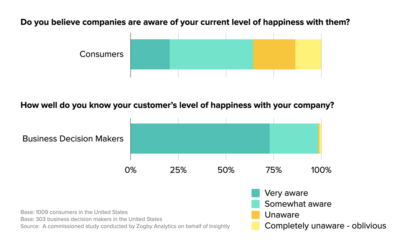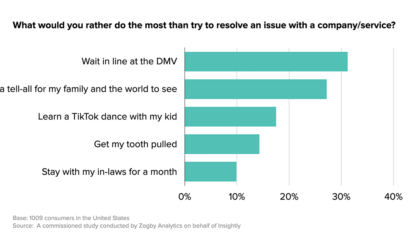In a recent post, I presented the first of three core pillars of great customer experiences: usefulness. In short, customers spend money because they’re trying to get something done — a job, a task, a goal — and companies must focus on providing that utility. But while being useful is essential, it’s not sufficient.
In order to reap the business benefits of customer experience, companies must also be easy to work with.
The concept of “easy” is, well, easy for just about anyone to grasp. We’ve all had some issue with an airline, a retailer, a bank, or a credit card company that’s been far more difficult to resolve than seemed necessary. Just last week, a recording of a Comcast customer trying to cancel his service went viral — no doubt because so many of us could relate to the pain that this customer felt. Our frustration lingers and causes us to harbor negative feelings not just about the specific employee involved — but also about the brand in general.
Ease of use is important for B2B companies as well. During a recent ethnographic research study, research firm Storyline interviewed a vice president in the healthcare industry who said, “There will come a time when I have to upgrade [a particular B2B product]. And if historically I’ve had far too much difficulty dealing with a certain brand, then I would no longer consider that brand.”
In fact, easiness is so important — and also so relatively rare — that office supplies mega-retailer Staples even made it its primary point of competitive differentiation. The idea of being easy to work with resonated with cube dwellers across the U.S., and Staples’ Easy Button™ quickly became standard office décor.
So how can you ensure that your company is easy to do business with? That your marketing materials clearly describe your offerings, that your website makes it simple to convert prospects into customers, and that your support processes are transparent and straightforward?
The answer is simple: You need to listen to your customers. Here are three ways to start:
1) Conduct social media audits. Social sites like Twitter and Facebook are prime outlets for people who want to vent their frustration to friends, family, or anyone else who will listen. Don’t forget to look at Yelp, Amazon, and any relevant industry-specific sites that encourage customer reviews. (Tech platforms like Sprout and salesforce.com’s Radian6 can help you set up social monitoring on an ongoing basis.)
2) Listen to customer support calls. Consider making this a required weekly or monthly practice for executives, managers, and other key stakeholders who don’t typically have direct customer contact. You’ll quickly discover pain points related to your products and services, and you’ll be able to assess whether or not the support calls themselves are alleviating or, like the Comcast call, adding to the problem.
3) Implement an ongoing Voice of the Customer program. Ideally, you should survey your customers on a regular basis and ask how easy their interactions with your company were. (Companies like Allegiance, Medallia, and Mindshare can help with this and the resulting analysis.) Unfortunately, the large number of brands that have followed this advice has resulted in an onslaught of survey requests and, not surprisingly, survey fatigue among consumers. But customers who have had a difficult time doing business with your company will likely welcome the opportunity to share their experience.
So now we’ve made it through two of the three pillars of great customer experiences: usefulness and easiness. In my an upcoming post, I’ll discuss the third: enjoyability.




